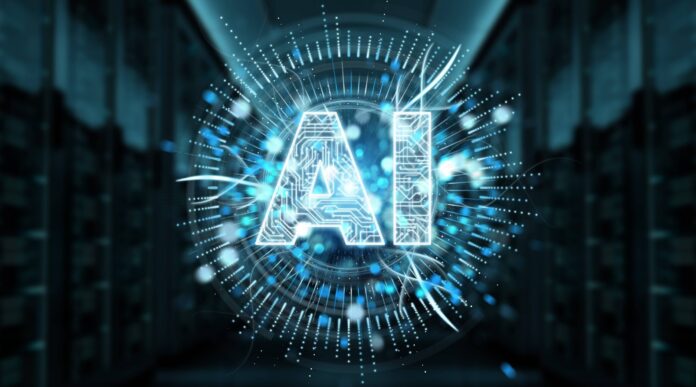AT&T’s VP of Network Analytics & Automation said that the telco is already using AI across its entire operations chain, from day zero to day two
Thanks to consumer-facing applications like Chat GTP, artificial intelligence is — an already hyped technology — is reaching a new level of fame. While the possibilities around generative AI (GenAI) are numerous and exciting, telecom companies have been using AI in their operations for years. Raj Savoor, the VP of network analytics and automation at AT&T, for instance, revealed that the telco is already using AI across its entire operations chain, from day zero to day two.
Day Zero, he explained briefly, is the network planning and forecasting phase; Day One is when the building and engineering happens; and Day Two (and beyond) refers to the ongoing management and optimization of the network. Savoor explained that AT&T uses AI at each operational stage to save time, cut costs and ensure the best network performance.
Day Zero: Supervised machine learning
According Savoor, AT&T use of AI on Day Zero is “pervasive and deep.”
“The type of AI techniques we use there falls into a domain we call supervised machine learning,” he continued. “We work with variables that to some extent we control. We have fixed variables and there is a decision tree from that.”
On Day Zero, the carrier is using AI technology to predict various elements related to traffic and user volumes in particular locations. “Where we have customers on fiber, what we see are trends related to number of devices in the home and what that consumption will be,” he provided as way of an example. “We also see correlations based on as camera densities improved on devices and overall quality of televisions goes up, we see correlations to predict how usage will grow over X number of years.”
Other examples include using AI to decide whether to bury the fiber or string it along poles. AT&T doesn’t even have to send a crew out to these locations, explained Savoor. Instead, the company can use deep learning techniques, which allows it to look at images of the location in question, as well as analyze the geospatial data to make those decisions. Because AT&T doesn’t need to perform truck rolls in such scenarios, AI is saving the company both tine and while, while also reducing its carbon footprint.
Day One: AI as a co-pilot
Day One (of the buildout phase) is one of the more resource intensive aspects of the telecom business, said Savoor. It involves sites visits, pulling fiber, climbing towers and so on.
“There are two areas here where AI acts as co-pilot,” he said. “We do a lot of quality audits as the crews are out there and as they make changes and deploy new capabilities.” Doing so, he continued, prevents the crew from missing something, and therefore, allows AT&T to avoid additional truck rolls. “The AI assistant acts as an additional quality agent,” he summarized.
Second, AI provides recommendations around what, if any, network parameters should be changed. “This is important because in some cases, there are hundreds of parameters and you can make one change and it can have a domino effect on other aspects of the network,” explained Savoor. “Having an AI co-pilot allows for a much more balanced way to make these decisions.”
Day Two: AI for network resiliency
Finally, to optimize and protect a network once it’s up and running, AT&T deploys intelligence and analytics to create network resiliency. For example, AI allows AT&T to predict the path of hurricanes and what network assets may be impacted. It can use historical data to answer questions such as has power been lost in that area previously, as well as estimate the number of potential consumers in the path and what other cell sites can be used to pick up additional users if certain cell sites go out.
“Beyond that, in general, there is a lot of constant optimization around the overall customer experience,” Savoor added.
Looking ahead
When asked if telecom operators will ever truly be able to “take their hands off the wheel” when it comes to network operations, he commented that really what AT&T is working towards is gaining as much visibility into its data, and therefore its network, as possible. AI, he said, can provide that additional visibility. “This will drive productivity and capabilities that we don’t yet see,” he said. “The near-term opportunities around GenAI, I think, are perhaps a little overstated, but in the long term, it’s likely understated.”
Currently, AT&T is using GenAI for an internal application called Ask AT&T. Released in June, the application uses OpenAI’s chatGPT functionality and helps the operator’s coders and software developers become more productive and translates customer and employee documentation from English to other languages, and even simplifies that same documentation and make it easier to use. Future use cases for GenAI, according to AT&T, include upgrading legacy software code and environments; making its care representatives even more effective at supporting customers; and giving employees quick and simple answers to HR questions.
“We’re training Ask AT&T in a deliberate and measured way, so we can ensure that the system returns useful, accurate and, maybe most importantly, responsible responses,” said the operator. “That measured, calculated approach is crucial.”
Keep an eye out for the complete report about this topic coming soon called Bringing AIOps to telecom: When will operators take their hands off the wheel?

